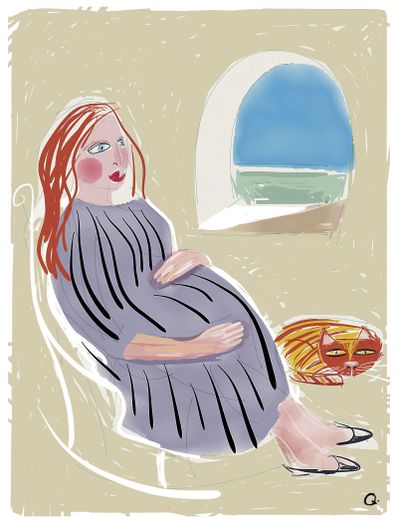Pregnant women face higher COVID-19 infection, mortality rates, study finds

In light of studies that found pregnant women are at greater risk of contracting – and dying from – COVID-19, researchers are calling for action from any states that don’t have pregnant women at or near the front of the line for vaccinations.
Dr. Kristina Adams Waldorf, an OB-GYN with the University of Washington School of Medicine, coauthored research recently published in the American Journal of Obstetrics and Gynecology. The findings are driven by data from 35 hospitals and clinics in Washington that are responsible for 61% of approximately 86,000 deliveries each year throughout the state.
A study published last week on COVID-19 infection rates among pregnant women found the rate among pregnant women was 70% higher than in similarly aged, non-pregnant adults.
The findings were presented in light of an earlier study published in late January, which found that three of 240 pregnant women evaluated as part of the research died of coronavirus.
According to the study, the three were from minority groups and had other health conditions, such as obesity and hypertension.
Some states, including Washington and Idaho, include pregnant women in Phase 1 vaccine distribution, citing pregnancy as an at-risk medical condition in accordance with Centers for Disease Control and Prevention guidelines.
In Washington, pregnant women are included among those eligible for vaccination during Phase 1B Tier 3, which is estimated to begin sometime in the spring/summer, according to the state’s vaccination timeline.
As of Feb. 12, the state was in Phase 1B Tier 1.
Idaho, meanwhile, has pregnant women under Group 3 in the state’s vaccine distribution plan, which – according to the state’s latest timeline – is scheduled for sometime around March or April.
“The higher infection rates in pregnant patients, coupled with an elevated risk for severe illness and maternal mortality due to COVID-19, suggests that pregnancy should be considered a high-risk health condition for COVID-19 vaccine allocation in Phase 1B all across the United States,” Adams Waldorf said. “The time to act is now.”
The Washington State COVID-19 in Pregnancy Collaborative led by Adams Waldorf and Erica Lokken, an epidemiologist at the UW School of Public Health, identified 240 pregnant women who acquired COVID-19 from March 1 through June 30. The Washington hospitals and clinics evaluated in the study contribute only 1.4% of annual births across the country.
The three deaths, however, represented 6.7% of all maternal deaths associated with COVID-19 counted across the United States through mid-October, according to the study, which found the mortality rate was approximately 13 times higher in pregnant mothers aged 20 to 39 than in similarly aged individuals with COVID-19 who were not pregnant.
As of the end of January, the Spokane County Regional Health District did not have conclusive data to confirm there have been any coronavirus-caused deaths of pregnant women, representatives said. A representative from Providence Sacred Heart Medical Center declined to comment. Representatives from MultiCare Health System did not return a request for comment.
Other findings included that most of the 240 pregnant mothers evaluated in the study experienced mild COVID-19 symptoms and recovered, as only one in 11 developed severe or critical symptoms. Twenty-four were hospitalized specifically for COVID-19 symptoms.
Demographically, 126 of the 240 patients (approximately 52%) reported Hispanic ethnicity, according to the study. Another 21.3% were white, non-Hispanic women, 8.3% were Black and and 3.3% each were American Indian/Alaska native, Asian or native Hawaiian/other Pacific Islander.
Among minority groups across the U.S., Adams Waldorf said the reasons why they are “disproportionately impacted” by COVID-19 include how they often live in denser households or work in essential jobs and cannot work from home. Some communities, she said, did not get the public health message early enough, while others have a lack of trust in the federal government.
“Our data indicates that pregnant people did not avoid the pandemic as we hoped that they would, and communities of color bore the greatest burden,” said Adams Waldorf, the study’s senior author.
“We were disheartened to see the higher infection rates in communities of color, as well as in patients with limited English proficiency.”
In light of the studies, Adams Waldorf is encouraging pregnant women to discuss the risks and benefits of COVID-19 vaccination with their care providers.
For her part, Adams Waldorf said she believes “the benefit of getting vaccinated far outweigh the risks.”
“If you have a 1 in 80 chance of dying if you get COVID-19,” she said, “that’s pretty stark when you’re young.”